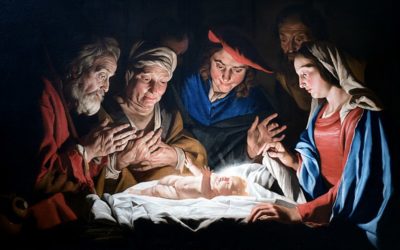The spring of 1832 was a trying time for the Prophet Joseph Smith. On the night of March 24 and 25, a mob attacked him in his sleep, dragged him from his home, stripped him of his clothing, beat him viciously, choked him to unconsciousness, tried to force poison down his throat, scratched his body, and covered him in tar and feathers. Before and after this trial, he received the revelations that are the subject of this week’s study.
Doctrine and Covenants 81
Today, Latter-day Saints are familiar with a Church organizational structure that includes a presiding First Presidency and Quorums of the Twelve and the Seventy. When the Church was legally organized on April 6, 1830, with only six official members, there wasn’t a need or room for all those offices. The two Church officers at the time were Joseph Smith and Oliver Cowdery, the first and second elder, respectively, with Oliver doubling as a record-keeper.
By 1832, however, the Church had grown enough to see the beginnings of what today we know as the First Presidency, with Joseph becoming president of the high priesthood, or president of the Church (see section 75 post). As the headnote to Doctrine and Covenants 81 explains, “The revelation (dated March 1832) should be regarded as a step toward the formal organization of the First Presidency, specifically calling for the office of counselor in that body and explaining the dignity of the appointment.”
As the headnote also explains, the revelation originally called Jesse Gause to be a counselor in the presidency, but he decided to abandon the Church and so lost that opportunity. Frederick G. Williams then took his place, and Jesse’s name was expunged from the revelation. To see the record with Jesse’s name expunged, click here.
For more on the history of this revelation, click here.
Doctrine and Covenants 82
After Joseph was brutally tarred and feathered, he traveled on Church business to Independence, Missouri, where on April 26, 1832, he received the revelation that is now section 82 of the Doctrine and Covenants. As the section headnote explains, “The occasion was a council of high priests and elders of the Church. At the council, Joseph Smith was sustained as the President of the High Priesthood, to which office he had previously been ordained at a conference of high priests, elders, and members, at Amherst, Ohio.”
The revelation is a rich one, explaining that God requires much of those to whom much is given (verses 1–4) and that He is bound when we keep our covenants with Him (verses 8–13).
In the revelation, the Lord also establishes an organization to help care for the poor, a pressing problem in the Church’s early days and today, and to care for the temporal aspects of the Church (verses 11–13).
The Lord also promises in the revelation that Zion would “increase in beauty,” her borders being “enlarged” and her stakes “strengthened” (verse 14), something we certainly witness today as the Church has spread throughout the earth. A fundamental principle in making Zion grow is obeying the two great commandments to love God and our neighbor (verse 19).
And how should we deal with those who persecute the Church? “Leave judgment alone with me, for it is mine and I will repay,” the Lord directs His followers (verse 23). Our thoughts, instead, should be on peace. “Peace be with you,” the Lord says, “my blessings continue with you. For even yet the kingdom is yours, and shall be forever, if you fall not from your steadfastness.” (Verses 23–24.)
Doctrine and Covenants 83
While visiting Independence, Joseph also received the revelation that is section 83 of the Doctrine and Covenants while meeting in council with other Church leaders. This revelation added to the law that was given in Kirtland (see post for section 42), which was essentially the Church’s general handbook at that time.
The new revelation specified how family members were to care for each other first and how the Church would provide after that (Doctrine and Covenants 83:1–6), a principle the Church still follows today as part of its self-reliance program.
Photo credit for image at top of page: C. C. A. Christensen, “Tarring and Feathering the Prophet,” Brigham Young University Museum of Art, public domain, copied from https://ast.wikipedia.org/wiki/Pioneros_mormones#/media/Ficheru:Tarring_and_Feathering_the_Prophet_by_C.C.A._Christensen.PNG.



